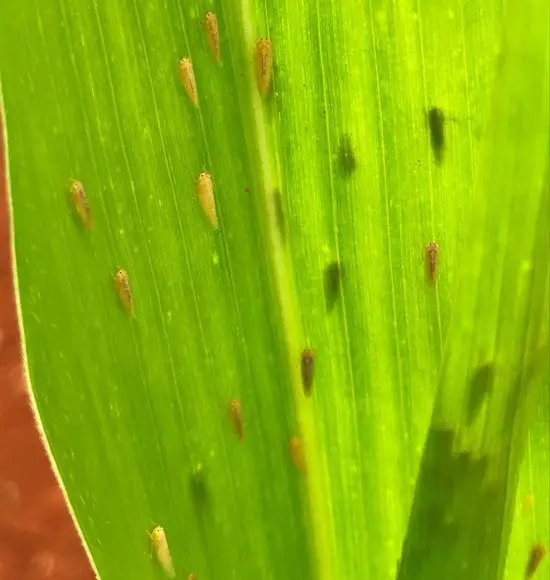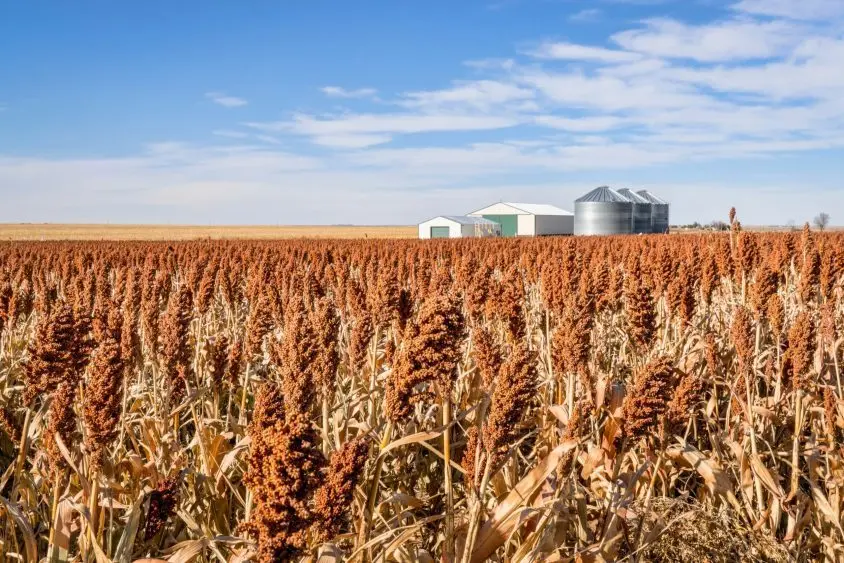Going into 2025, researchers were on high alert for corn stunt and wanted to know if it would become a more common pest. Field sampling this season is providing additional insights into the future prevalence of the disease.
Corn stunt disease is characterized by severely stunted plants that produce multiple small ears with loose or missing kernels. Initial symptoms are small chlorotic (yellow) stripes at the base of the leaves that expand and merge toward the tip of the leaf, which may lead to premature leaf death. As infected plants age, they also may develop a reddish to reddish-purple color.
Corn stunt is caused by the bacterial pathogen Spiroplasma kunkelii, which is transmitted by corn leafhoppers when they feed on infected plants then feed on healthy plants. Corn leafhoppers can transmit a disease complex including corn stunt, maize bushy stunt, maize rayado fino virus, and/or sugarcane mosaic virus. In the U.S., corn stunt and maize bushy stunt are the most prevalent.
Corn leafhoppers feed inside the whorl and move to the underside of the leaf as plants grow. Corn leafhopper feeding alone often does not reduce yield but its role as a vector for disease can reduce yield significantly. After acquiring the pathogen, the insect becomes infective after 20 days, and symptoms appear in the plant about three weeks after infection.
Corn leafhoppers travel on prevailing winds but need warm temperatures and a living host to survive and reproduce. Depending on conditions, they can produce two to 12 generations per season, but typically do not overwinter in the U.S.
The 2025 Season
Corteva conducted a comprehensive field sampling program in 2025 in partnership with Oklahoma State University, Kansas State University, Texas A&M University and Pioneer Field Teams to monitor the incidence and distribution of corn leafhoppers and their associated pathogens.
In 2025, improved monitoring efforts led to the first detection of corn leafhoppers in Texas in February, an earlier start than 2024. The insects continued to spread through most of the Rio Grande Valley in the following months.
By the end of the 2025 growing season, corn leafhopper presence was confirmed in 185 counties across 16 states, ranging from Texas to Minnesota and California to Kentucky.
More than 2,416 insect samples were submitted to Corteva Plant Diagnostic Services (CPDS) as of October 14, 2025, with 75.1% confirmed as corn leafhopper. However, only 3.8% carried one or more diseases.
The first case of corn stunt was reported in Texas in May. By the end of the 2025 growing season, the disease was confirmed in 51 counties across six states — Arizona, California, Kansas, New Mexico, Oklahoma and Texas. Most of the confirmed cases were in Texas counties.
Infected leafhopper populations are migrating from maturing crops to younger crops in Texas, causing increased disease incidence in second-season corn. While infection rates are higher, field teams report populations have not reached treatment levels.
Over 250 leaf samples were submitted to CPDS as of mid-October, with 33% testing positive for corn stunt, 7% for maize bushy stunt, and 3% for both. The low rate of positive tests may reflect the low prevalence of infected vectors and misidentification of field symptoms when submitting samples.
“We’re not seeing near as many hoppers in the field,” said Brad Hopkins, Pioneer product agronomist in South Texas. “As we start further south, we are seeing some more instances of symptoms in the field. I would say, so far, we’re a lot slower than what we saw last year.”
The unprecedented outbreak of corn stunt disease in 2024 impacted corn in several states. Kansas and Oklahoma experienced yield losses ranging from 10% to 55%, though impacts were highly variable.
“There were some specific wind patterns that were allowing these vectors to move toward upper parts of the states,” said Krystel Navarro, North American plant pathology lead. “So, what makes [2024] unique? I think mostly it’s going to be the wind patterns. It was very warm and there was availability of corn for the corn leafhopper to continue to reproduce, feed and survive.”
Data from the 2025 trials and the Suction Trap Network suggest the 2024 outbreak was primarily driven by unusual weather patterns that facilitated northward migration of corn leafhoppers. With the lower incidence of both corn leafhopper and corn stunt alongside enhanced trapping and surveillance efforts, similar yield losses are not anticipated in 2025.
The Bottom Line
Corn leafhopper presence does not necessarily lead to corn stunt outbreaks. The disease requires a combination of biological and environmental conditions, which are not prevalent in U.S. corn systems, so the overall risk of this pest-disease complex becoming a major issue remains low.





